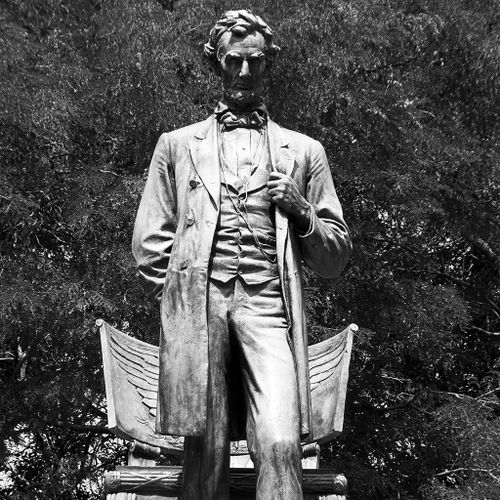Standing Lincoln

Title
Standing Lincoln
Date
1887
Artist
Augustus Saint-Gaudens (1848-1907)
Location
Lincoln Park
Context
Many art historians regard Lincoln Park’s “Standing Lincoln” as one of the 19th century’s greatest masterpieces of public art. It was created collaboratively by two of the genre’s greatest masters – sculptor Augustus Saint-Gaudens and architect Stanford White. The sculpture was funded from a bequest in the will of Chicago lumber broker Eli Bates and specified for siting in Lincoln Park. Dedicated in 1889, is an important East Coast counterpart to Chicago’s evolving approaches to modernism in art and architecture during the same period of time. The environment created by St. Gaudens and White merges classical form and unadorned natural dignity. Instead of portraying Lincoln as an enshrined deity, he is portrayed with humble humanity as in real life. His downward gaze is one of reflectiveness, his posture natural, and clothes rumpled. Behind him is a chair of formal classicism – a throne-like symbol befitting his role in history. But he stands before it without pretense. Stanford White’s base takes the form of a classical exedra -the reflective ancient gathering places of Greece and Rome. It is simplified and abstracted into a sweeping form where all who come to gather there are on a communal equal basis. The sculpture becomes a focal point for reflection observable from many perspectives. Many people who personally knew Lincoln and were alive at the time of the monument’s dedication commented on the imagery being a moving and accurate representation. As a guide, Augustus Saint-Gaudens used life casts of Lincoln’s face and hands made by Chicago sculptor Leonard Volk.